It’s been a long and scattered month featuring chips on every side: British style, banking style, and lifestyle. Much of the time was spent outside Portland, outside the US, and in places where debit and credit card transactions have used chip technology for more than 15 years. And for a decade of those 15, I’ve been coping, when abroad, with the American reluctance to enter the turn of the past century mark, swiping and signing while all around me can handle restaurant tabs without letting go of their good names.
This time, I had what I came to call my mutt of a card, which does feature a chip…and requires a signature instead of a PIN anyway. Okay, fine, whatever. When I returned home to my pile of accumulated mail, however, lo and behold, there was a spanking new card in the stack. With chip and PIN technology! And a two-page missive explaining to me that this is the technology of the future and I need to become comfortable with it. My eyes rolled and fell onto the floor as, of course, the rest of the world has moved on to tap.
My first forray to the supermarket with new card and need to restock what passes for my larder, the cashier looked at my gristled hair and decided I probably needed to be walked through chip and PIN in steps designed for the antique and dementia addled. I was kind; I let her.
The new chip technology I met abroad this trip was of the domestic tech type, rather than the financial. And it ain’t new, just new to me. There came the day in my travels when transit connections had gone belly up and my own belly was hollering for a refill before I could think my way through reasonable alternatives. The appearance of a Chinese takeaway–one with clean windows and a menu card both expansive and inexpensive–got my custom. And the kung pao shrimp with mushrooms was excellent! Good spice, fresh and plump shellfish equal to the litter of forest fruits. And all served up on a bed of…chips. As in fried potatoes. Equally well preapared and surprisingly harmonious with the kung pao.
The other chips have been less harmonious, as in the chips are down. But hey, cycle of life and all that. Spring has arrived, and with it the sweetly smelling cedar chips in flower beds. So things will either look up, or I’ll just concentrate on looking between the chips and the sky…at the flowers.
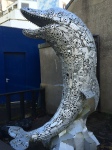
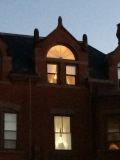 doing what I have just come outside from doing myself, working away in front of a
doing what I have just come outside from doing myself, working away in front of a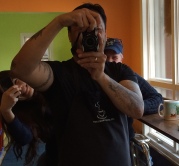 lyrics, including the
lyrics, including the 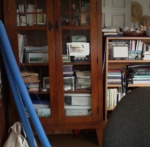 mining. One of my California friends and I continue to talk weekly, just as we have continued to talk through 25 years or more (except when we don’t). And that is the beauty of gold: it doesn’t tarnish, regardless of the miles you put on it.
mining. One of my California friends and I continue to talk weekly, just as we have continued to talk through 25 years or more (except when we don’t). And that is the beauty of gold: it doesn’t tarnish, regardless of the miles you put on it.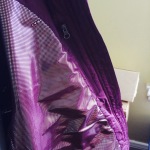
 upon my return: of course, the seasonal decking of Henry Wadsworth Longfellow’s monument had been retrieved, so again he sits all stone at State and Congress Streets, bereft of his gilded packages and the red ribbon tracing through his slightly outreaching right hand.
upon my return: of course, the seasonal decking of Henry Wadsworth Longfellow’s monument had been retrieved, so again he sits all stone at State and Congress Streets, bereft of his gilded packages and the red ribbon tracing through his slightly outreaching right hand.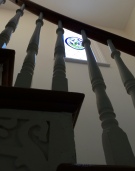 drawers and boxes in preparation for a house changing ownership in April, in Halifax, and then, down the road to Boston, ate dinner with my longest-time friend before she decamped for the weekend I stayed in her flat while doing my longterm business of “professional activities,” to whit,
drawers and boxes in preparation for a house changing ownership in April, in Halifax, and then, down the road to Boston, ate dinner with my longest-time friend before she decamped for the weekend I stayed in her flat while doing my longterm business of “professional activities,” to whit,